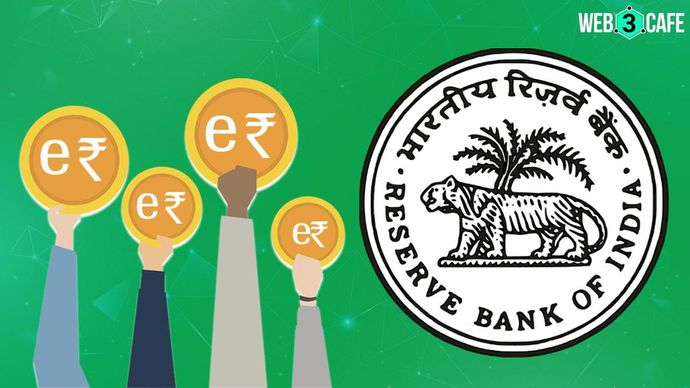RBI sets CBDC expansion goals for banks, targets 1 million daily transactions by year-end
The RBI is promoting eRupee adoption, pushing India towards a digital currency future. As other countries explore CBDCs, transformative changes in the global financial landscape are imminent.

Highlights
- RBI drives eRupee adoption by assigning targets to banks
- Banks meeting eRupee targets will be eligible for rewards from the government
- The exploration of CBDCs worldwide will lead to a transformative financial landscape
The Reserve Bank of India (RBI) has set ambitious targets for its under-trial Central Bank Digital Currency (CBDC), the eRupee, aiming to achieve one million daily transactions by December. The country's CBDC initiative has been in progress for over two years, and last year, India introduced its first-ever national digital currency in pilot mode for testing.
To accelerate the adoption of the eRupee, RBI is reportedly giving targets to banks, requiring them to facilitate a minimum number of transactions using the CBDC. Despite initial skepticism from Indian banks about the limited use cases for eRupee, they are now directed by the RBI to ensure that selected users can conduct daily purchases with digital currency.
Banks involved in CBDC trials & rewards for meeting targets
Several prominent state-owned and private banks, including State Bank of India, Bank of Baroda, ICICI Bank, HDFC Bank, Kotak Mahindra Bank, and Yes Bank, are actively participating in the ongoing CBDC trials alongside the RBI.
Once the banks meet their assigned targets for eRupee transactions, they will become eligible for rewards approved by the government, encouraging them to actively promote and integrate digital currency into their services.
Advantages of eRupee & integration with UPI QR codes
CBDCs, like eRupee, function similarly to cryptocurrencies but are regulated and issued by central banks. These digital currencies not only enhance online payment systems but also aim to reduce reliance on physical cash notes, promoting a more digital and cashless economy.
As part of the ongoing trials, the eRupee CBDC is equipped with the capability to interact with existing Unified Payments Interface (UPI) QR codes in India. This feature will allow test users to process payments with digital currency by simply scanning the widely-used QR codes.
As of June 2023, CBDC transactions were carried out by 1.3 million customers and 0.3 million merchants, showcasing an increasing trend in the adoption of the eRupee, according to RBI Deputy Governor T Rabi Sankar.
Global adoption of CBDCs
The Bank for International Settlements (BIS) conducted a survey, indicating that nearly two dozen central banks across emerging and advanced economies are projected to have digital currencies in circulation by the end of the decade.
This demonstrates the growing interest in CBDCs and their potential impact on global financial systems. India's journey toward a successful CBDC implementation has seen significant progress, with the eRupee garnering substantial transactions and engagement.
By setting targets for banks and ensuring active involvement in the ongoing trials, the RBI is driving the adoption of eRupee and pushing the country closer to a future with digital currencies at the forefront of its financial ecosystem. With several other countries also exploring the potential of CBDCs, the global financial landscape is bound to witness transformative changes in the coming years.
